Industrial Demand Response Management Systems Market Size
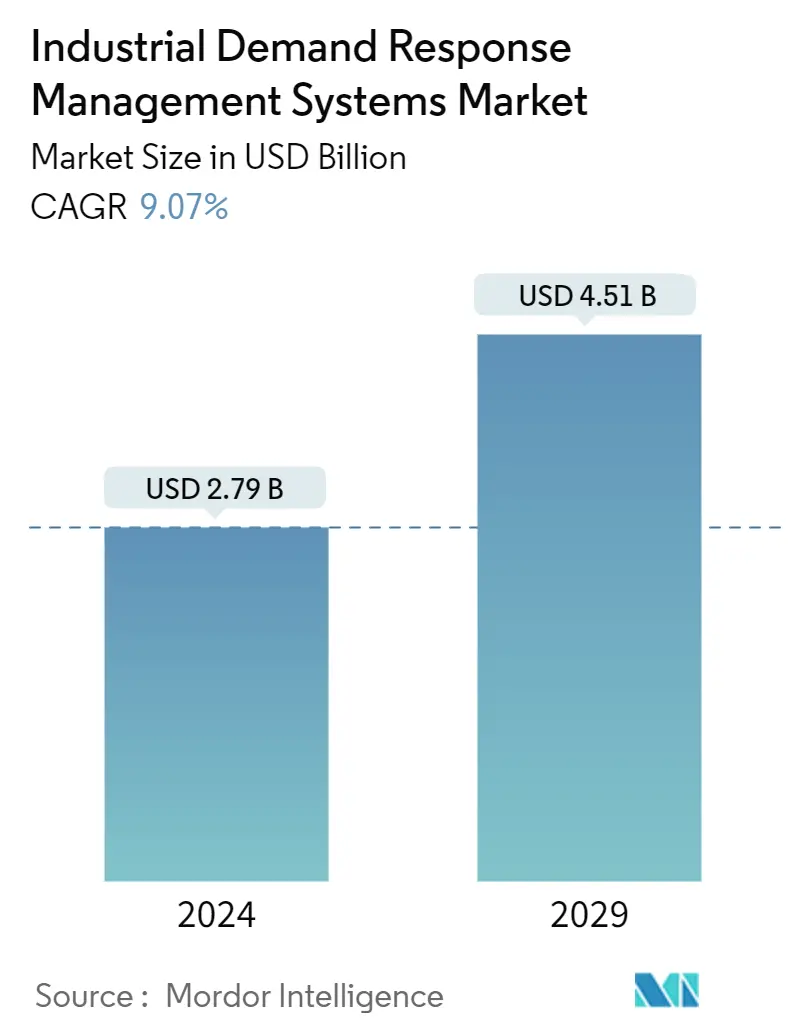
| Study Period | 2019- 2029 |
| Market Size (2024) | USD 2.79 Billion |
| Market Size (2029) | USD 4.51 Billion |
| CAGR (2024 - 2029) | 9.07 % |
| Fastest Growing Market | Asia Pacific |
| Largest Market | Asia Pacific |
Major Players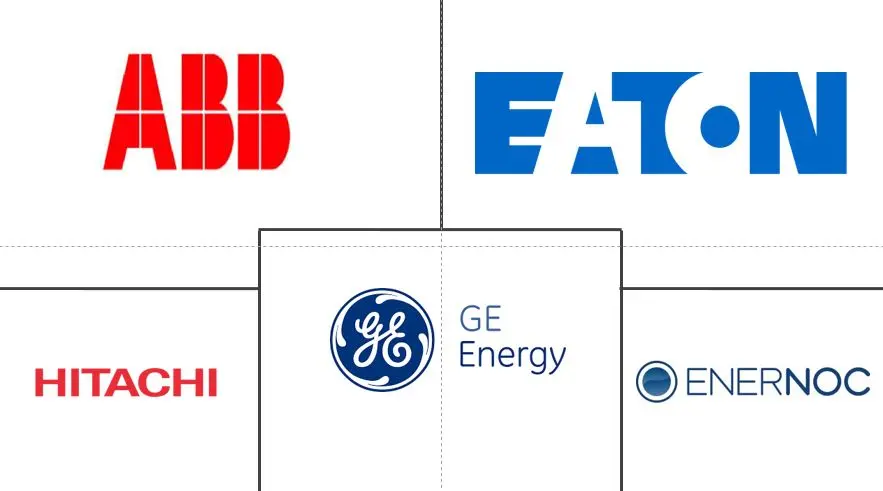
*Disclaimer: Major Players sorted in no particular order |
Need a report that reflects how COVID-19 has impacted this market and its growth?
Industrial Demand Response Management Systems Market Analysis
The Industrial Demand Response Management Systems Market size is estimated at USD 2.79 billion in 2024, and is expected to reach USD 4.51 billion by 2029, growing at a CAGR of 9.07% during the forecast period (2024-2029).
- The need for efficient energy management systems and the growing penetration of renewable energy sources are expected to drive the market over the medium term.
- On the other hand, privacy concerns about industrial demand response management systems are expected to hamper the market's growth.
- Nevertheless, the rising adoption of smart grid technologies is expected to be a significant opportunity for the market in the forecast period.
- Asia-Pacific is expected to have a significant share of the market due to the increasing adoption of renewable energy sources.
Industrial Demand Response Management Systems Market Trends
Growing Penetration of Renewable Energy Sources to Drive the Market
- One of the key drivers behind the rising demand for the industrial demand response management system is the increasing penetration of renewable energy sources into the power grid. Over the past decade, the global power sector has been actively transitioning towards cleaner energy generation, focusing significantly on wind, solar, and hydroelectric power.
- According to the International Renewable Energy Agency (IRENA), the global renewable energy installed capacity reached more than 3,371 GW in 2022, a nearly 10% rise from over 3,077 GW in 2021. The increasing adoption of renewable energy is anticipated to drive the demand for industrial demand response management systems.
- Several of the biggest economies are expected to boost renewable energy use supported by massive initiatives. These initiatives are expected to make notable progress in advancing renewables, which in turn will drive smart grids.
- The European Union (EU) accelerated the deployment of solar and wind power in response to the energy crisis, with over 50 GW added in 2022, an almost 45% surge compared to 2021. Additionally, the new policies and targets proposed in the REPowerEU and the Green Deal Industrial Plan are expected to continue significantly boosting renewable energy investments in the countries, creating a significant market for industrial demand response management systems.
- The United States Energy Information Administration (EIA) projected that wind energy's share of the United States electricity generation mix would rise from around 11% to 12% from 2022 to 2023. Further, solar energy was expected to grow from 4% to 5% from 2022 to 2023. Such ambitious targets are anticipated to provide significant opportunities for the industrial demand response management system market during the forecast period.
- With the rapid integration of renewables and distributed technologies onto the grid, companies are increasingly upgrading their existing systems to address the challenges of maintaining power quality, balancing supply and demand in real-time, and ensuring adequate distribution infrastructure capacity. These advancements are expected to accelerate the growth and deployment of industrial demand response management systems.
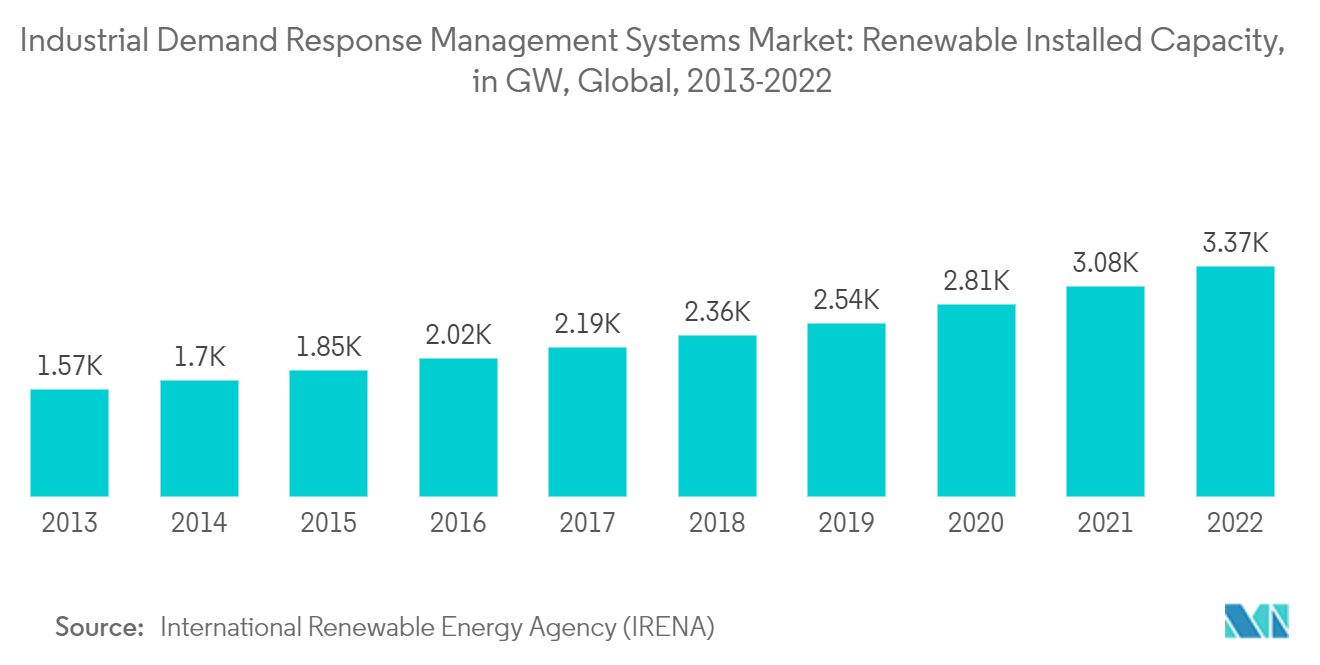
Asia-Pacific to Witness a Significant Growth
- The market for industrial demand response management systems in the Asia-Pacific region is expected to witness significant growth during the forecast period.
- China is making increasing efforts to implement demand-side management (DSM) programs as a means of reducing peak electricity demand and matching renewable energy with demand. According to the International Energy Agency (IEA), China had about three million barrels per day (bpd) of new refining capacity at the start of 2023. It expects that China's new capacity will increase to 3.2 million bpd by 2028 as further refining units are added at a more rapid rate than throughput volumes.
- Besides, as per IEA, during the 2022-28 period, China will likely add 1.5 million bpd of new refining capacity, taking nameplate capacity to 19.7 million bpd. Still, processing volumes are expected to rise to 16.5 million bpd over the forecast period. Additionally, expansion and upgradation operations are ongoing at multiple Chinese refineries. The addition or expansion of new refining capacity is expected to increase the demand for DRMS in the coming years.
- A demand response (DR) system whose ability to adjust load owing to the grid requirements is not an entirely new concept in the Indian regulatory ecosystem. The DR method enables the adjustment of demand, which in turn allows customers to participate in the response to changing grid conditions. The implementation of DR, a proven demand management tool, will assist electricity distribution companies in India in managing their increasing electricity consumption over the coming years and operating more reliably in a greener grid.
- In February 2023, AutoGrid, a provider of virtual power plants and distributed energy management systems (DERMS), announced a collaborative initiative with Tata Power, one of India's largest integrated power companies. In addition to supporting India's clean energy transition, this pioneering program will help address peak demand in residential, commercial, and industrial areas.
- By the summer of 2025, Tata Power plans to roll out a new Demand Response Management Program to serve its customers in Mumbai, India's largest city. The program will involve 6,000 large commercial and industrial customers to attain 75 MW of peak capacity decrease within the first six months and then continue to rise to 200 MW.
- Considering the development of the industrial sector in the region and the adoption of demand response programs, the region is expected to witness a massive demand for DRMS in the future.
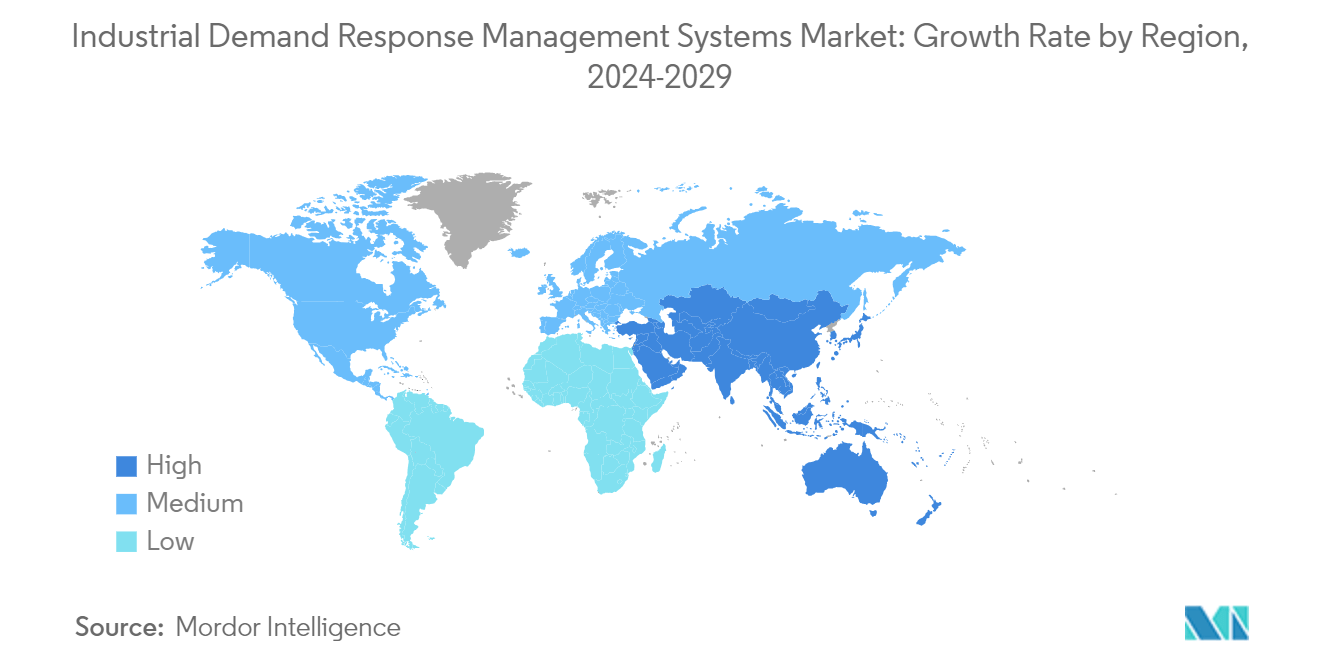
Industrial Demand Response Management Systems Industry Overview
The industrial demand response system market is semi-fragmented. Some of the major players in the market (in no particular order) include Schneider Electric SE, Eaton Corporation PLC, Hitachi Ltd, EnerNOC Inc., General Electric Company, ABB Ltd., and others.
Industrial Demand Response Management Systems Market Leaders
Hitachi Ltd
ABB Ltd.
General Electric Company
EnerNOC Inc.
Eaton Corporation PLC
*Disclaimer: Major Players sorted in no particular order
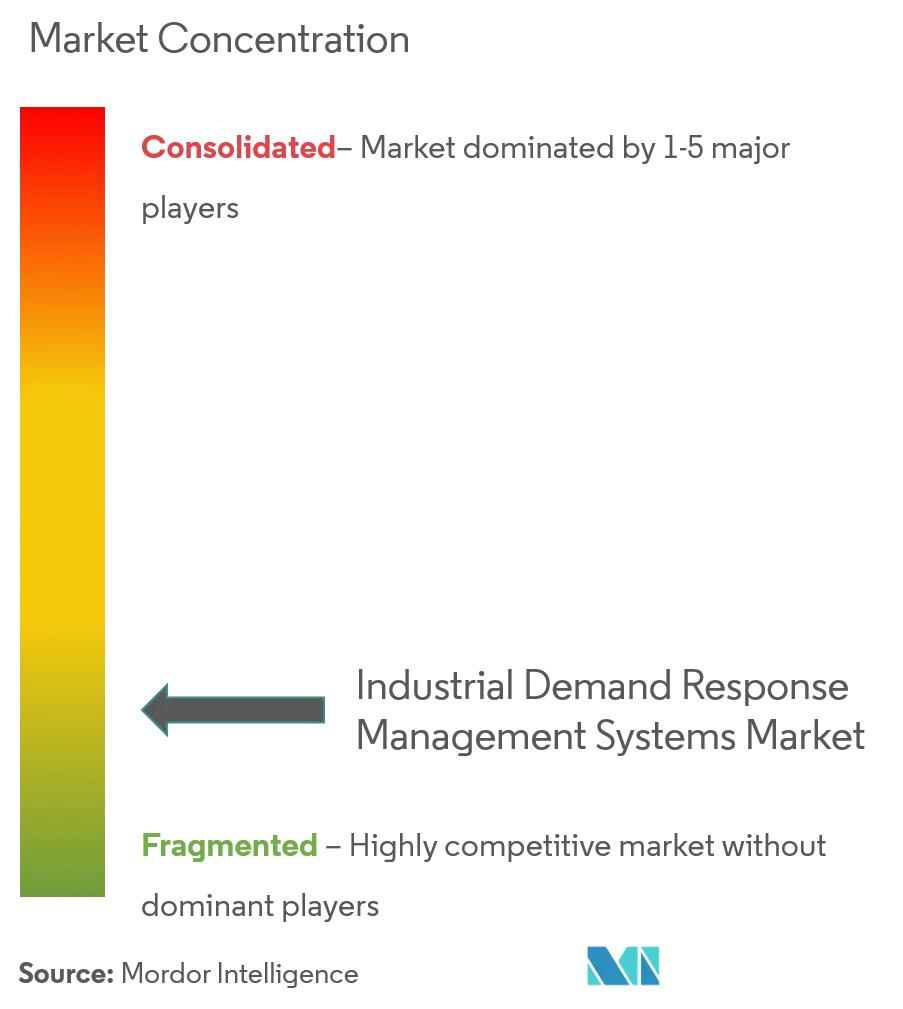
Industrial Demand Response Management Systems Market News
- June 2023: Vertiv launched its Vertiv EnerSav service, helping critical facility operators unlock cost savings through targeted energy reduction. This service avoided substantial infrastructure investments by conducting rigorous on-site assessments and gap analyses. Vertiv's innovative External Digital Demand Response Technology (EDD-RT) further optimizes energy consumption by dynamically adapting manufacturer settings based on live consumption patterns.
- July 2023: CPower Energy and OBM announced their partnership to integrate CPower's EnerWise Site Optimization technology ("EnerWise") into Foreman's mining management platform during the Mining Disrupt Conference. CPower collaborated with Foreman, and this collaboration enhanced the demand response functionality of Foreman's software. This enabled Foreman's customers to optimize their participation in demand response programs, maximizing revenue generation while contributing to grid reliability.
- October 2023: Google tested a demand-response system, which was expected to reduce the electricity consumption for data centers during times of stress on local grids in Taiwan, Oregon, and across Europe. The company planned to roll out the system more widely by shifting non-urgent computing tasks to other times and locations. The company assures customers that it will not impact Google services.
Industrial Demand Response Management Systems Market Report - Table of Contents
1. INTRODUCTION
1.1 Scope of the Study
1.2 Market Definition
1.3 Study Assumptions
2. EXECUTIVE SUMMARY
3. RESEARCH METHODOLOGY
4. MARKET OVERVIEW
4.1 Introduction
4.2 Market Size and Demand Forecast, in USD, until 2029
4.3 Recent Trends and Developments
4.4 Market Dynamics
4.4.1 Drivers
4.4.1.1 Need for Efficient Energy Management Systems
4.4.1.2 Growing Penetration of Renewable Energy Sources
4.4.2 Restraints
4.4.2.1 Privacy Concerns on the Industrial Demand Response Management Systems
4.5 Supply-Chain Analysis
4.6 Porter's Five Forces Analysis
4.6.1 Bargaining Power of Suppliers
4.6.2 Bargaining Power of Consumers
4.6.3 Threat of New Entrants
4.6.4 Threat of Substitutes Products and Services
4.6.5 Intensity of Competitive Rivalry
5. MARKET SEGMENTATION
5.1 Type
5.1.1 Conventional Demand Response
5.1.2 Automated Demand Response
5.2 Geography
5.2.1 North America
5.2.1.1 United States
5.2.1.2 Canada
5.2.1.3 Rest of North America
5.2.2 Asia-Pacific
5.2.2.1 China
5.2.2.2 India
5.2.2.3 Japan
5.2.2.4 Australia
5.2.2.5 Malaysia
5.2.2.6 Thailand
5.2.2.7 Indonesia
5.2.2.8 Vietnam
5.2.2.9 Rest of Asia-pacific
5.2.3 Europe
5.2.3.1 Germany
5.2.3.2 France
5.2.3.3 United Kingdom
5.2.3.4 Italy
5.2.3.5 Spain
5.2.3.6 Nordic
5.2.3.7 Turkey
5.2.3.8 Russia
5.2.3.9 Rest of Europe
5.2.4 South America
5.2.4.1 Brazil
5.2.4.2 Argentina
5.2.4.3 Chile
5.2.4.4 Colombia
5.2.4.5 Rest of South America
5.2.5 Middle-East and Africa
5.2.5.1 Saudi Arabia
5.2.5.2 United Arab Emirates
5.2.5.3 South Africa
5.2.5.4 Qatar
5.2.5.5 Egypt
5.2.5.6 Nigeria
5.2.5.7 Rest of Middle East & Africa
6. COMPETITIVE LANDSCAPE
6.1 Mergers and Acquisitions, Joint Ventures, Collaborations, and Agreements
6.2 Strategies Adopted by Leading Players
6.3 Company Profiles
6.3.1 Schneider Electric SE
6.3.2 Siemens AG
6.3.3 Hitachi Ltd
6.3.4 Mitsubishi Electric Corporation
6.3.5 ABB Ltd.
6.3.6 Alstom SA
6.3.7 General Electric Company
6.3.8 Eaton Corporation PLC
6.3.9 Silver Spring Networks Inc.
6.3.10 EnerNOC Inc.
6.3.11 REGEN Energy Inc.
6.3.12 Autogrid Systems Inc.
- *List Not Exhaustive
6.4 Market Ranking Analysis
7. MARKET OPPORTUNITIES AND FUTURE TRENDS
7.1 Rising Adoption of Smart Grid Technologies
Industrial Demand Response Management Systems Industry Segmentation
Demand response (DR) refers to purposeful adjustments in the electricity consumption of a load to align with the supply, optimizing the balance between power demand and availability. This strategic approach aids in integrating intermittent renewable sources such as solar and wind, promoting the utilization of generated clean energy and mitigating the reliance on storage capacity.
The industrial demand response management systems market is segmented by type and geography (North America, Asia-Pacific, Europe, South America, and Middle-East and Africa). By type, the market is segmented into conventional demand response and automated demand response. The report also covers the market size and forecasts for the industrial demand response management systems across major regions.
For each segment, the market sizing and forecasts have been done based on revenue (USD).
| Type | |
| Conventional Demand Response | |
| Automated Demand Response |
| Geography | |||||||||||
| |||||||||||
| |||||||||||
| |||||||||||
| |||||||||||
|
Industrial Demand Response Management Systems Market Research FAQs
How big is the Industrial Demand Response Management Systems Market?
The Industrial Demand Response Management Systems Market size is expected to reach USD 2.79 billion in 2024 and grow at a CAGR of 9.07% to reach USD 4.51 billion by 2029.
What is the current Industrial Demand Response Management Systems Market size?
In 2024, the Industrial Demand Response Management Systems Market size is expected to reach USD 2.79 billion.
Who are the key players in Industrial Demand Response Management Systems Market?
Hitachi Ltd, ABB Ltd., General Electric Company, EnerNOC Inc. and Eaton Corporation PLC are the major companies operating in the Industrial Demand Response Management Systems Market.
Which is the fastest growing region in Industrial Demand Response Management Systems Market?
Asia Pacific is estimated to grow at the highest CAGR over the forecast period (2024-2029).
Which region has the biggest share in Industrial Demand Response Management Systems Market?
In 2024, the Asia Pacific accounts for the largest market share in Industrial Demand Response Management Systems Market.
What years does this Industrial Demand Response Management Systems Market cover, and what was the market size in 2023?
In 2023, the Industrial Demand Response Management Systems Market size was estimated at USD 2.54 billion. The report covers the Industrial Demand Response Management Systems Market historical market size for years: 2019, 2020, 2021, 2022 and 2023. The report also forecasts the Industrial Demand Response Management Systems Market size for years: 2024, 2025, 2026, 2027, 2028 and 2029.
Industrial Demand Response Management Systems Industry Report
Statistics for the 2024 Industrial Demand Response Management Systems market share, size and revenue growth rate, created by Mordor Intelligence™ Industry Reports. Industrial Demand Response Management Systems analysis includes a market forecast outlook to 2029 and historical overview. Get a sample of this industry analysis as a free report PDF download.
